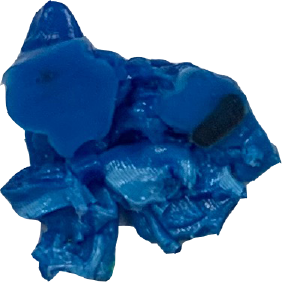Silicone
Melting down PLA into new shapes is a common method of PLA recycling. In this process, the PLA is shredded into small pieces and placed into a silicone mold which is then placed into a kiln. The kiln was set to a temperature between 200-220C for several hours allowing the PLA to melt. The kiln provides a controlled environment with a consistent temperature, which ensures that the PLA melts evenly and avoids any burning or charring. Additionally, the which reduces burning as well. This method is a cost effective way of recycling PLA and reducing the waste produced by 3D printing. The silicone molds could also be custom made to any shape allowing for a wide range of applications. However, some challenges arose while melting the PLA. The insulating silicone mold and little air circulation in the kiln made it difficult to melt the PLA and left many bubbles in the casting.
The silicone mold was made thinner and a different piece of silicone was used to squish down the melted PLA before allowing it to cool. This was done with the hope of increasing the heat transfer to the PLA and pushing out any air bubbles that may be trapped. This resulted in a significantly better looking dogbone but still leaves room for improvement. A convection oven is being considered to allow for convective heat transfer to help the PLA melt faster and more evenly.
